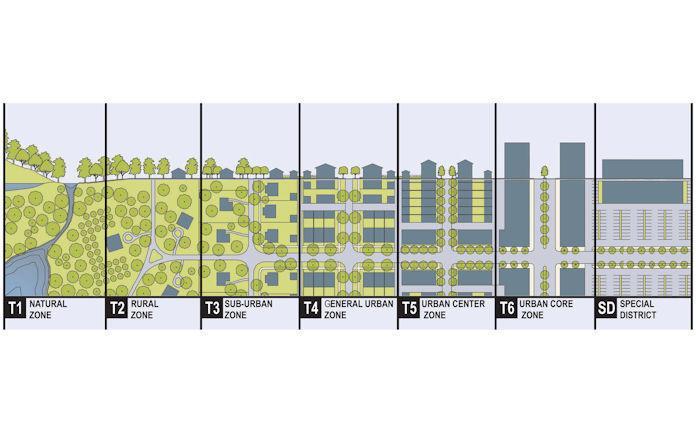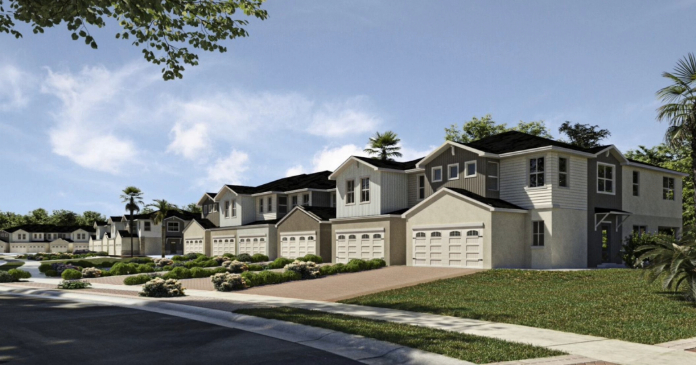In a paper titled “Upscaling the Neighborhood” presented at the meeting “Land, Labor, and the Rule of Law” at the Hoover Institution, Notre Dame Law School professor Nicole Stelle Garnett discussed land use policy as it relates to the inner ring of suburbs around major metropolitan areas.
The paper discusses a number of items of interest to developers and apartment owners. Specifically, it reviews the rise of the “new urbanists” and the development of certain trends in urban planning. These include the push for intra-metropolitan resource redistribution and regional consolidation of local government authority, the development of transect zoning and the implementation of form-based building codes.
Think bigger
The first trend is informed by the idea that individual municipalities within larger metropolitan areas are under pressure from economic and demographic forces outside their control. The consequences of their decisions, in turn, impose external costs on surrounding municipalities. The proposed solution is to consolidate land use policy authority in the form of a broader regional government. Such an entity would have the power to redistribute funds within the region and to impose regional planning standards on the local municipalities. How proponents of this plan aim to get local governments to give up control over their own communities and how they would convince wealthier municipalities to send their tax dollars to subsidize the less well off neighboring communities is not clear.
Traditional zoning uses a building’s purpose to determine where it can be located, i.e. residential or commercial. It tends to create neighborhoods of buildings with generally the same use. Transect zoning emphasizes the form of the buildings more than their use and promotes the development of mixed use neighborhoods.
Transect is defined by the purported natural reduction of building densities as the neighborhood’s distance from the urban core increases. The transect density zones include the urban core, the urban center, the general urban, the sub-urban, the rural and the natural zones. Starting from large, high-rise, densely-spaced buildings in the urban core, the size, height and density allowed in each successive zone of the transect is reduced under transect zoning. Under this method of planning, the purpose of the building (office, residential, mixed use) to less important than its form.
Form as function
Traditional building codes focus on defining the construction standards to be applied to buildings. They seek to control things like electrical safety, fire resistance and energy efficiency. Form-based codes also seek to control the building’s appearance. As such, they are much more subjective than traditional building codes and may require many more pages of regulations to define. Because of their subjective nature, obtaining plan approval may still come down to the judgment of the plan reviewer. These codes may also require the use of expensive materials in facades or glazing that drive up building costs.
In the competition to attract wealthier residents, the current urban ideal is mixed use neighborhoods with older (at least in appearance) housing stock and traditional street front commercial areas. Walk-ability and access to transit are key. The split level ranch homes and strip malls of the post-war inner suburbs are no longer desirable.
The new urbanists say that regional government needs the power to impose the transect model and their preferred aesthetic on the built environment. This is their answer to urban decline in the inner ring.
A land use policy cautionary note
The paper’s author reminds us that top down plans for resurrecting declining neighborhoods frequently have not achieved the intended results. She points to the urban renewal efforts which took place after World War II, in particular, and reminds us that they often took the mixed-use neighborhoods the new urbanists now prefer and turned them into the urban mono-cultures the new urbanists now decry.
She notes that, as one group moves out of a neighborhood, another frequently moves in and that the inner ring suburbs are now often home to communities of immigrants and of minorities who left the cities. Because they are no longer trendy, these neighborhoods are a source of relatively affordable housing in an increasingly expensive living environment.
The author’s voice is one urging caution, and I would even say humility, when we think that we have all of the answers for land use policy in urban planning. See the full report here.
















